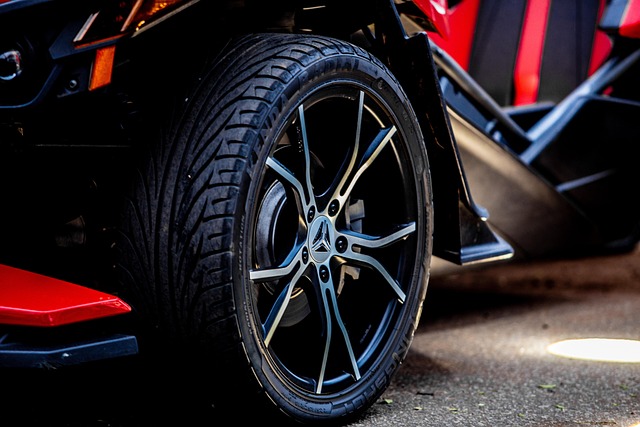Looking to register your car in California? This comprehensive guide breaks down the process step-by-step, from understanding eligibility requirements to obtaining your license plate. We’ll walk you through gathering essential documents, performing a DMV VIN verification, and completing the registration process either online or in person. By following these straightforward steps, you’ll be on your way to securing your vehicle’s registration in no time.
- Understand Eligibility Requirements for Car Registration
- Gather Necessary Documents for Vehicle Registration
- Perform DMV VIN Verification Step-by-Step
- Complete Online or In-Person Registration Process
- Obtain License Plate and Proof of Registration
Understand Eligibility Requirements for Car Registration

Before you begin the registration process, it’s crucial to understand if your vehicle meets California’s eligibility criteria. All vehicles operated on California roads must be registered with the Department of Motor Vehicles (DMV). This includes cars, trucks, and SUVs, regardless of age or make. One essential step in the registration process is the DMV VIN verification, ensuring that the vehicle’s unique identification number (VIN) is legitimate and matches the details held by the manufacturer.
A valid California driver’s license and current insurance are also required. Additionally, proof of ownership through a title document is necessary. If you’re purchasing a used car, ensure that the seller provides all relevant documents for a smooth registration process. Consider using a mobile vin verifier for convenient and accurate VIN inspection to streamline this initial verification step.
Gather Necessary Documents for Vehicle Registration

Before you start the registration process, ensure you have all the essential documents required by the California Department of Motor Vehicles (DMV). The key document is the Vehicle Identification Number (VIN) verification report, which confirms the vehicle’s history and specifications. This can usually be obtained through a vin inspection conducted by an authorized agent or using a mobile vin verifier app for a quick and convenient digital check.
Additionally, you’ll need proof of insurance, a valid driver’s license, and the vehicle’s title (if applicable). Gather these documents to streamline the registration process at your nearest DMV office or, in some cases, opt for online registration if available.
Perform DMV VIN Verification Step-by-Step

Performing a DMV VIN (Vehicle Identification Number) verification is a crucial step in registering your car in California. Here’s how to do it step-by-step:
1. Gather Required Documents: Before heading to the DMV, ensure you have all necessary documents like the title, registration certificate, proof of insurance, and valid driver’s license. Additionally, you’ll need to provide a completed Vehicle Application form (DMV Form Reg-220).
2. Locate Your Vehicle: The VIN is typically found on the vehicle’s chassis or on a label near the windshield. If your car has had multiple owners, double-check that you have the correct VIN. For convenience, many people opt for a mobile vin inspection using apps or services that can quickly verify the number and ensure accuracy before visiting the DMV. Once confirmed, note this unique identifier down for future reference.
Complete Online or In-Person Registration Process

In California, registering a car involves either completing an online or in-person process through the Department of Motor Vehicles (DMV). Regardless of your preference, ensuring accurate documentation and correct procedures is key to a smooth registration experience. For online registration, you’ll need to provide details like vehicle information, owner data, and applicable fees. A crucial step in this process involves performing a DMV VIN verification, where the unique Vehicle Identification Number (VIN) is cross-checked against manufacturer records to ensure authenticity. This can be done conveniently through the official DMV website or third-party services that offer online VIN inspection tools.
If opting for an in-person registration, you’ll visit a local DMV office and present necessary documents such as proof of ownership, identification, and insurance. Here, a mobile vin inspection is not typically required as the agency conducts its own verification processes during the registration. However, having a reliable vin inspection service beforehand can save time by ensuring all paperwork is in order. This approach streamlines the process, allowing you to focus on other important aspects of car ownership like securing necessary permits and licenses for safe operation on California’s roads.
Obtain License Plate and Proof of Registration

After completing your vehicle’s registration application at the DMV, it’s time to obtain your license plate and proof of registration. This crucial step involves a simple process that begins with a DMV VIN verification. You’ll need to provide the Vehicle Identification Number (VIN) for your car, which can be found on the vehicle’s title or by checking the driver-side door jamb. The staff will use this unique identifier to cross-reference information in their system and ensure everything is in order.
Once verified, you’ll receive your license plate and official registration documents. For added convenience, many services offer mobile VIN inspection options, allowing you to complete this process remotely. Alternatively, a mobile vin verifier can come to you, ensuring a hassle-free experience. Remember, having these essential items installed on your vehicle is not just legal requirement but also demonstrates your commitment to responsible car ownership.
Registering a car in California involves understanding eligibility requirements, gathering essential documents, completing a DMV VIN verification, and choosing between online or in-person registration. Once approved, you’ll receive your license plate and proof of registration, ensuring your vehicle is legally recognized on California’s roads. Remember to always follow these steps to maintain compliance with state regulations, making the process efficient and hassle-free. Additionally, performing a dmv vin verification is a crucial step that ensures the vehicle’s history is accurately checked.
